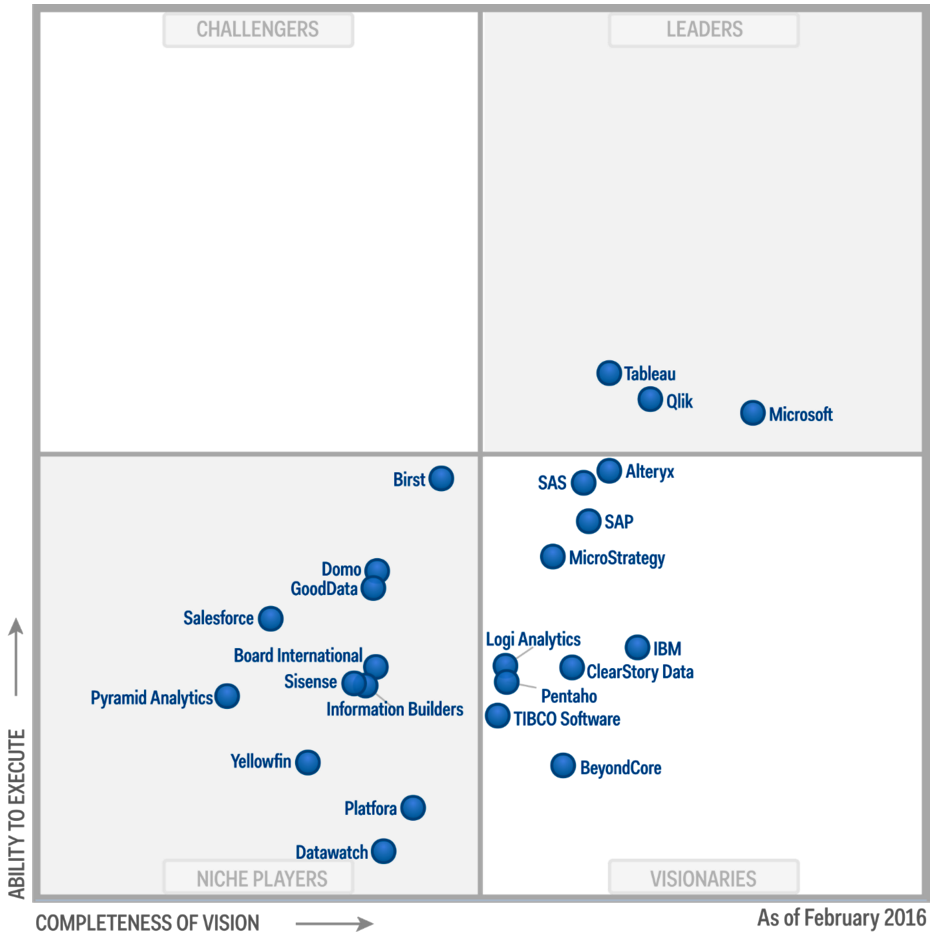
The Rise and Fall of Qlik

Business intelligence software maker Qlik Technologies (NASDAQ: QLIK) today announced that it has agreed to be acquired by the private equity firm Thoma Bravo for $30.50 per share, or about $3 billion. As one of the largest of a new wave of visual analytic firms, Qlik’s acquisition could hasten consolidation in a crowded BI field.
Founded in Sweden more than 20 years ago, Qlik created a niche for itself by developing an easy-to-use BI tool that users could navigate visually and without the extensive training required by the popular BI products of the day from Cognos, Business Objects, and Hyperion.
After loading data into a server-based associative, in-memory database, Qlik customers could explore the data in a variety of ways from an AJAX Web GUI, enabling them to create and publish all sorts of reports and dashboards. The approach is not entirely dissimilar to the one taken by its rival, Tableau Software, which has also benefited from the big data boom and the democratization of BI.
The combination of market forces and a keen eye for product development were propellant for growth at Qlik. In 2009, the Radnor, Pennsylvania-based company had 11,400 customers and $157 million in revenues. By 2010, it had grown to 13,000 customers and had an IPO. By 2015, the company boasted 37,000 customers, $612 million in revenue, and a market cap north of $2.8 billion.
Qlik’s stock peaked in August at nearly $42 per share, but by early 2016 it had lost 58 percent of its value. It was a smoother decline than that of rival Tableau, which lost half its value in a single day in February when it reported disappointing quarterly results.
Thoma Bravo, which has an extensive collection of technology firms under its umbrella, gets Qlik for a relative bargain at $30.50 per share, which is more than $1.00 per share less than Qlik’s stock was trading for last week. Nevertheless, Thoma Bravo asserts that the price its paying represents a premium of 40% compared to Qlik’s “unaffected 10 day average stock price prior to March 3, 2016.”
Seth Boro, a managing partner at Thoma Bravo, applauded Qlik’s roadmap and says the firm expects to see growth out of Qlik, which has offices or partners in 100 countries. “Qlik’s platform blends best-in-class associative analytics and visualizations with data governance, scalability and interoperability,” Boro said in a statement.

Gartner’s 2016 Magic Quadrant for Business Intelligence and Analytics Platforms
While the big data analytics space is definitely hot, the market for BI tools has become crowded, and Qlik’s offering is just of many tools that offer compelling features. The crowded BI market “has finally reached a tipping point,” Gartner analysts wrote earlier this year in its closely watched Magic Quadrant for BI and Analytic Platforms, which featured offerings from 24 companies.
Qlik and Tableau have long been considered the leaders of the space, but they are increasingly facing stiff competition from both the old BI guard that they displaced, as well as a new crop of tools that look to build on the lessons Qlik and Tableau have learned, particularly as it applies to big and fast-moving data.
Up and coming BI vendors and tools like GoodData, Domo, Looker, ZoomData, Birst, Pyramid Analytics, Datawatch, and Alteryx are increasingly encroaching on the territory once claimed by Qlik and Tableau. At the same time, a new crop of Hadoop- and Spark-data based BI tools from the likes of Platfora, Datameer, and Clearstory Data must also be on the minds of Qlik executives hoping to create growth.
At the end of the day, any number of the vendors here would love to have the sort of success that Qlik has enjoyed. In the rough and tumble sport of business intelligence, however, nobody is golden for long.
Related Items:
Tumultuous Times for BI and Analytic Tool Vendors
Tech ‘Democratization’ Seen Fueling Analytics Boom



























